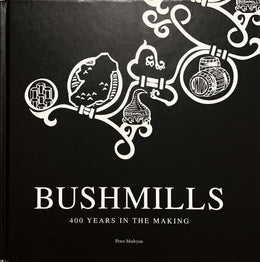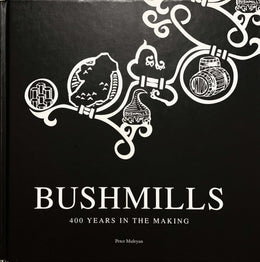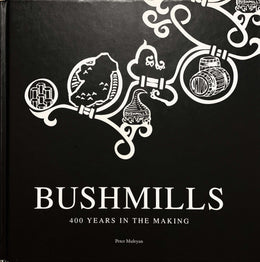
Full steam ahead. Bushmills' new ambitions mean Colum and his team have never been busier.
There is only one certainty in the drinks industry —one company always seems to be taking over another. So it is not surprising that every now and then quirky things happen. In 2001 former Bushmills boss Richard Burrows led Pernod Ricard on a shopping trip that netted them Seagram. Ironically Irish Distillers ended up being part of the team who took over the company that helped it take over Old Bushmills in the early 1970s.
In 2005 the Fates moved again. This time Pernod Ricard —by now the world's third largest drinks company, were after Allied Domecq, the second largest. It was a breathtakingly ambitious take-over, as Pernod was valued at some €3 billion less than its target. The only way it was going to work was if Diageo, the biggest of all was offered a sacrifice to keep it out of the race for Allied Domecq. That offering was the Bushmills distillery, at the bargain price of £200 million.
“We engaged with them and did a deal," Burrows told the press at the time.
The deal paid off, the €10.95 billion merger went ahead and Diageo Chief Executive Paul Walsh was left with something he had always wanted —a major Irish whiskey brand to partner his other Irish-based success stories, Baileys and Guinness.

US Business magazine Forbes thought Diageo's deal was "truly platinum" while Ian Paisley Junior, the local Member of the Northern Ireland Assembly told the BBC, "if the brand develops and grows, then one would expect to see development at Bushmills and more job opportunities there."
Paisley was right: what this meant for Old Bushmills was radical. Bushmills' brands, so long kept in the shadow of Jameson, could now be pushed into the limelight. No sooner was the ink dry on the deal, than Diageo started to pump money into the distillery and began ramping up production. In 2005 Bushmills was selling some400,000 cases of whiskey; within two years that had grown to 500,000. Walsh aims to grow sales further to 1 million cases by 2011, taking a chunk out of Jameson's dominance of the Irish whiskey sector.
Over three years some £6 million was invested in production and marketing Old Bushmills. New anniversary packaging was introduced, the company started sponsoring the Irish Rugby team and the brand launched its first ever global advertising push. This refreshingly honest campaign brought to life the people, the place and the craft of the distillery, with a series of photographs featuring the workers who actually make the whiskey.
But producing "Irish at its Best" takes a lot of time and planning and with the sales curve in mind, it fell to Gordon Donoghue, the distillery Supply Director to implement the kind of change needed to supply future demand, so Donoghue pretty much doubled output immediately after the acquisition. Three day weeks became five day weeks, as he and Master Distiller Colum Egan slowly but surely steered the distillery towards 24/7 production.
Whiskey making is a delicated time consuming operation and keeping standards high while almost trebling production is no small task. Quality is of course the first concern, and with the distillery already running at full capacity the team at Bushmills had to handle the inevitable expansion carefully.

Master Distiller Colum Egan

Stillman Kenny Garvin joined Bushmills in September 1979. His grandfiither Thomas was foreman in the malt barn (1920-61). His father Ronald was a joiner (1968-88) and his mother was one of the first ladies to work in the bottling hall (1969-85).
The whole whiskey making process had to be reassessed and expanded without ruining the character of the building or the whiskey.
First up was a new mash tun, but that caused a bottleneck in the already crowded still house and this would be harded to remedy. A new still was needed, but where to put it? The Victorian still house is home to four wash-stills and five spirit-stills and over the past century or so expansion had been steady, but manageable. Increasing production threefold in three years was uncharterd territory and with the public having access to each and every stage of production, any further changes would have to be carefully considered.
A new still scheduled for installation in the anniversary summer of 2008 is the tenth in an already crowded space; it will have to be lowered through the roof
Work is also in progress on a new warehouse, number 17, which will be used to mature all the new whiskey and 400 years after the original licence to distil, Bank of Ireland released a new series of bank notes featuring the distillery —Old Bushmills has never been busier.

Written by Peter Mulryan
The text is an excerpt from "Bushmills: 400 Years in the Making" (pp. 135 - 139), written by Peter Mulryan, published 2008 by Appletree Press Ltd.






